EARTHQUAKE ENGINEERING
 |
| Shake-table crash trying out of a ordinary constructing model (left) and a base-isolated building version (right) at UCSD |
Earthquake engineering is an interdisciplinary branch of engineering that designs and analyzes structures, inclusive of buildings and bridges, with earthquakes in thoughts. Its typical goal is to make such systems extra proof against earthquakes. An earthquake (or seismic) engineer goals to assemble structures a good way to not be broken in minor shaking and will avoid severe harm or collapse in a prime earthquake. Earthquake engineering is the scientific field worried with protecting society, the natural surroundings, and the man-made environment from earthquakes with the aid of restricting the seismic risk to socio-economically applicable ranges. Traditionally, it has been narrowly described as the observe of the behavior of structures and geo-systems concern to seismic loading; it's far considered as a subset of structural engineering, geotechnical engineering, mechanical engineering, chemical engineering, implemented physics, etc. However, the remarkable prices skilled in latest earthquakes have brought about an expansion of its scope to encompass disciplines from the broader subject of civil engineering, mechanical engineering, nuclear engineering, and from the social sciences, particularly sociology, political technology, economics, and finance.
The main objectives of earthquake engineering are :
* Foresee the potential outcomes of robust earthquakes on city areas and civil infrastructure.
* Design, construct and keep systems to perform at earthquake publicity as much as the expectancies and in compliance with constructing codes.
A well engineered structure does now not always ought to be extremely sturdy or expensive. It needs to be well designed to resist the seismic results while sustaining an appropriate stage of harm.
Seismic loading
Seismic loading means application of an earthquake-generated excitation on a structure (or geo-shape). It occurs at touch surfaces of a structure both with the floor, with adjacent systems, or with gravity waves from tsunami. The loading that is anticipated at a given location on the Earth's surface is estimated via engineering seismology. It is related to the seismic chance of the region.
Seismic performance
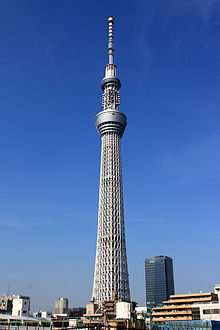 |
| Tokyo Skytree, geared up with a tuned mass damper, is the world's tallest tower and is the world's second tallest structure. |
Earthquake or seismic overall performance defines a shape's capacity to preserve its fundamental capabilities, which include its protection and serviceability, at and after a specific earthquake publicity. A shape is generally considered secure if it does now not endanger the lives and properly-being of those in or around it by means of partly or completely collapsing. A structure may be taken into consideration serviceable if it is able to fulfill its operational features for which it become designed.
Basic principles of the earthquake engineering, applied within the major constructing codes, anticipate that a constructing need to live on a rare, very severe earthquake through maintaining massive damage however without globally collapsing. On the alternative hand, it should stay operational for greater frequent, however less extreme seismic occasions.
Seismic performance assessment
Engineers want to recognise the quantified degree of the actual or predicted seismic overall performance related to the direct damage to an person building difficulty to a particular ground shaking. Such an assessment can be done either experimentally or analytically.
Experiment assessment
Experimental opinions are high-priced checks which can be normally carried out through setting a (scaled) version of the structure on a shake-table that simulates the earth shaking and staring at its behavior. Such types of experiments have been first completed greater than a century ago. Only lately has it grow to be viable to perform 1:1 scale trying out on complete structures.
Due to the highly-priced nature of such exams, they tend to be used in particular for expertise the seismic conduct of systems, validating models and verifying evaluation techniques. Thus, as soon as properly proven, computational fashions and numerical techniques generally tend to hold the primary burden for the seismic overall performance assessment of systems.
Analytical / Numerical assessment
 |
| Snapshot from shake-table video of a 6-story non-ductile concrete building unfavourable checking out |
Seismic performance assessment or seismic structural analysis is a powerful tool of earthquake engineering which makes use of specified modelling of the structure together with methods of structural analysis to benefit a higher knowledge of seismic overall performance of building and non-building systems. The method as a formal concept is a fantastically recent improvement.
In wellknown, seismic structural analysis is based at the methods of structural dynamics. For decades, the maximum distinguished tool of seismic evaluation has been the earthquake response spectrum approach which additionally contributed to the proposed constructing code's idea of today.
However, such methods are right most effective for linear elastic structures, being in large part not able to version the structural behavior whilst harm (i.E., non-linearity) appears. Numerical step-through-step integration proved to be a more effective approach of evaluation for multi-diploma-of-freedom structural structures with vast non-linearity below a brief manner of ground motion excitation. Use of the finite element method is one of the most not unusual processes for reading non-linear soil structure interplay laptop fashions.
Basically, numerical evaluation is carried out so that it will compare the seismic overall performance of homes. Performance opinions are usually achieved with the aid of using nonlinear static pushover evaluation or nonlinear time-records evaluation. In such analyses, it's miles crucial to achieve accurate non-linear modeling of structural additives which include beams, columns, beam-column joints, shear partitions etc. Thus, experimental consequences play an crucial role in determining the modeling parameters of person components, specifically the ones which might be challenge to sizeable non-linear deformations. The individual components are then assembled to create a complete non-linear model of the shape. Thus created models are analyzed to evaluate the performance of buildings.
The abilties of the structural evaluation software are a primary attention in the above technique as they limit the feasible element models, the analysis methods available and, most importantly, the numerical robustness. The latter turns into a primary consideration for systems that challenge into the non-linear variety and technique international or nearby disintegrate because the numerical solution will become more and more volatile and for this reason hard to reach. There are several commercially to be had Finite Element Analysis software's along with CSI-SAP2000 and CSI-PERFORM-3-d, MTR/SASSI, Scia Engineer-ECtools, ABAQUS, and Ansys, all of which may be used for the seismic performance assessment of homes. Moreover, there is studies-based finite detail evaluation systems which include OpenSees, MASTODON, which is based at the MOOSE Framework, RUAUMOKO and the older DRAIN-2D/3D, numerous of that are now open source.
Research for earthquake engineering
 |
| Shake-desk testing of Friction Pendulum Bearings at EERC |
Research for earthquake engineering way each subject and analytical investigation or experimentation meant for discovery and medical explanation of earthquake engineering related information, revision of conventional concepts inside the mild of recent findings, and sensible utility of the advanced theories.
The National Science Foundation (NSF) is the primary United States authorities employer that helps essential studies and schooling in all fields of earthquake engineering. In unique, it specializes in experimental, analytical and computational research on layout and performance enhancement of structural structures.
 |
| E-Defense Shake Table |
The Earthquake Engineering Research Institute (EERI) is a pacesetter in dissemination of earthquake engineering research related facts both in the U.S. And globally.
A definitive list of earthquake engineering studies related shaking tables around the world may be discovered in Experimental Facilities for Earthquake Engineering Simulation Worldwide. The maximum prominent of them is now E-Defense Shake Table in Japan.
Major U.S. research programs
NSF also supports the George E. Brown, Jr. Network for Earthquake Engineering Simulation
The NSF Hazard Mitigation and Structural Engineering application (HMSE) supports research on new technology for improving the behaviour and reaction of structural structures situation to earthquake dangers; fundamental research on protection and reliability of constructed structures; progressive developments in analysis and model based totally simulation of structural behaviour and reaction inclusive of soil-shape interplay; design ideas that enhance structure performance and versatility; and application of new manipulate techniques for structural structures.
(NEES) that advances expertise discovery and innovation for earthquakes and tsunami loss discount of the nation's civil infrastructure and new experimental simulation strategies and instrumentation.
The NEES network functions 14 geographically-dispensed, shared-use laboratories that assist numerous styles of experimental paintings: geotechnical centrifuge research, shake-table checks, massive-scale structural checking out, tsunami wave basin experiments, and area web page studies. Participating universities encompass: Cornell University; Lehigh University; Oregon State University; Rensselaer Polytechnic Institute; University at Buffalo, State University of New York; University of California, Berkeley; University of California, Davis; University of California, Los Angeles; University of California, San Diego; University of California, Santa Barbara; University of Illinois, Urbana-Champaign; University of Minnesota; University of Nevada, Reno; and the University of Texas, Austin
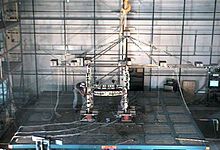 |
| NEES at Buffalo testing facility |
.
The gadget web sites (labs) and a significant records repository are connected to the worldwide earthquake engineering network thru the NEEShub website. The NEES internet site is powered by using HUBzero software developed at Purdue University for nanoHUB in particular to assist the clinical community share resources and collaborate. The cyberinfrastructure, related via Internet2, affords interactive simulation equipment, a simulation device improvement location, a curated crucial statistics repository, animated displays, consumer support, telepresence, mechanism for importing and sharing assets, and facts about customers and usage patterns.
This cyberinfrastructure lets in researchers to: securely keep, prepare and share information inside a standardized framework in a imperative place; remotely have a look at and take part in experiments thru the usage of synchronized real-time information and video; collaborate with colleagues to facilitate the planning, overall performance, evaluation, and guide of research experiments; and conduct computational and hybrid simulations that can combine the effects of more than one distributed experiments and link bodily experiments with laptop simulations to allow the investigation of overall gadget performance.
These assets together provide the manner for collaboration and discovery to improve the seismic layout and overall performance of civil and mechanical infrastructure systems.
Earthquake simulation
The first actual earthquake simulations were done by means of statically making use of some horizontal inertia forces primarily based on scaled peak ground accelerations to a mathematical version of a building. With the similarly improvement of computational technologies, static processes began to provide way to dynamic ones.
Dynamic experiments on building and non-building structures can be physical, like shake-desk checking out, or digital ones. In both cases, to verify a shape's anticipated seismic overall performance, a few researchers favor to deal with so called "real time-histories" although the last can not be "real" for a hypothetical earthquake particular with the aid of either a constructing code or via some particular studies requirements. Therefore, there is a robust incentive to interact an earthquake simulation that is the seismic input that possesses only vital functions of a real occasion.
Sometimes earthquake simulation is known as a re-introduction of local results of a strong earth shaking.
Structure simulation
 |
| Concurrent experiments with building fashions which might be kinematically equivalent to a actual prototype. |
Theoretical or experimental evaluation of anticipated seismic overall performance in the main calls for a shape simulation that's based at the idea of structural likeness or similarity. Similarity is some degree of analogy or resemblance among two or extra objects. The belief of similarity rests either on actual or approximate repetitions of patterns in the in comparison objects.
In wellknown, a building model is stated to have similarity with the actual object if the 2 share geometric similarity, kinematic similarity and dynamic similarity. The most vivid and effective type of similarity is the kinematic one. Kinematic similarity exists when the paths and velocities of moving debris of a version and its prototype are comparable.
The closing degree of kinematic similarity is kinematic equivalence while, inside the case of earthquake engineering, time-histories of each story lateral displacements of the version and its prototype will be the identical.
Seismic vibration control
Seismic vibration manipulate is a fixed of technical way aimed to mitigate seismic impacts in constructing and non-building structures. All seismic vibration manage gadgets can be labeled as passive, lively or hybrid where:
* passive control devices don't have any remarks functionality among them, structural factors and the floor;
* lively manipulate devices comprise real-time recording instrumentation on the floor incorporated with earthquake input processing equipment and actuators within the structure;
* hybrid manipulate gadgets have combined features of energetic and passive control systems.
When floor seismic waves attain up and begin to penetrate a base of a constructing, their energy drift density, because of reflections, reduces dramatically: commonly, up to 90%. However, the last portions of the incident waves all through a prime earthquake nonetheless endure a huge devastating potential.
After the seismic waves input a superstructure, there are a number of methods to control them so that it will soothe their negative impact and improve the building's seismic overall performance, as an example:
* to deplete the wave electricity internal a superstructure with properly engineered dampers;
* to disperse the wave strength among a wider variety of frequencies;
* to absorb the resonant quantities of the complete wave frequencies band with the help of so-known as mass dampers.
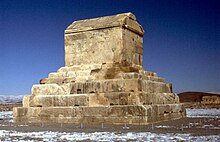 |
| Mausoleum of Cyrus, the oldest base-isolated shape in the global |
Devices of the last kind, abbreviated correspondingly as TMD for the tuned (passive), as AMD for the lively, and as HMD for the hybrid mass dampers, have been studied and set up in high-upward push homes, predominantly in Japan, for 1 / 4 of a century.
However, there's quite some other technique: partial suppression of the seismic electricity circulate the superstructure referred to as seismic or base isolation.
For this, a few pads are inserted into or below all most important load-wearing factors in the base of the building which ought to substantially decouple a superstructure from its substructure resting on a shaking ground.
The first evidence of earthquake protection by way of the usage of the principle of base isolation turned into located in Pasargadae, a metropolis in ancient Persia, now Iran, and dates lower back to the sixth century BCE. Below, there are some samples of seismic vibration manipulate technology of nowadays.
Dry-stone walls in Peru
 |
| Dry-stone walls of Machu Picchu Temple of the sun , Peru |
Peru is a fairly seismic land; for hundreds of years the dry-stone production proved to be greater earthquake-resistant than the usage of mortar. People of Inca civilization were masters of the polished 'dry-stone partitions', referred to as ashlar, wherein blocks of stone were reduce to fit together tightly with none mortar. The Incas were a few of the pleasant stonemasons the world has ever seen and many junctions of their masonry were so perfect that even blades of grass couldn't in shape between the stones.
The stones of the dry-stone walls constructed by the Incas should flow slightly and resettle without the partitions collapsing, a passive structural manipulate approach using both the principle of power dissipation (coulomb damping) and that of suppressing resonant amplifications.
Tuned mass damper
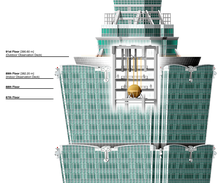 |
| Tuned mass damper in Taipei 101, the world's 1/3 tallest skyscraper |
Typically the tuned mass dampers are big concrete blocks mounted in skyscrapers or other structures and pass in opposition to the resonance frequency oscillations of the structures via some sort of spring mechanism.
The Taipei 101 skyscraper desires to resist hurricane winds and earthquake tremors not unusual in this location of Asia/Pacific. For this cause, a steel pendulum weighing 660 metric tonnes that serves as a tuned mass damper become designed and set up atop the shape. Suspended from the 92nd to the 88th floor, the pendulum sways to decrease resonant amplifications of lateral displacements in the constructing caused by earthquakes and strong gusts.
Hysteretic dampers
A hysteretic damper is supposed to offer better and more reliable seismic overall performance than that of a traditional shape with the aid of increasing the dissipation of seismic input strength. There are 5 predominant agencies of hysteretic dampers used for the reason, namely:
* Fluidvviscous dampers ( FVDs )
Viscous Dampers have the gain of being a supplemental damping system. They have an oval hysteretic loop and the damping is velocity based. While a few minor renovation is potentially required, viscous dampers commonly do no longer need to be replaced after an earthquake. While greater expensive than different damping technologies they may be used for both seismic and wind masses and are the maximum commonly used hysteretic damper.
* Friction dampers ( FDs )
Friction dampers have a tendency to be to be had in two principal types, linear and rotational and burn up electricity by using heat. The damper operates on the principle of a coulomb damper. Depending on the design, friction dampers can enjoy stick-slip phenomenon and Cold welding. The fundamental downside being that friction surfaces can wear over time and because of this they're no longer encouraged for dissipating wind loads. When used in seismic packages wear isn't always a hassle and there's no required renovation. They have a square hysteretic loop and so long as the constructing is adequately elastic they generally tend to settle again to their unique positions after an earthquake.
* Metallic yielding dampers ( MYDs )
Metallic yielding dampers, because the name implies, yield which will absorb the earthquake's electricity. This sort of damper absorbs a huge amount of power but they must be replaced after an earthquake and can prevent the constructing from settling back to its original position.
* Viscoelastic dampers ( VEDs )
Viscoelastic dampers are useful in that they may be used for each wind and seismic programs, they're usually confined to small displacements. There is a few concern as to the reliability of the generation as some brands had been banned from use in buildings within the United States.
* Stradding pendulum dampers ( swing )
Base isolation
Base isolation seeks to prevent the kinetic power of the earthquake from being transferred into elastic strength inside the building. These technology accomplish that with the aid of separating the structure from the ground, consequently allowing them to move incredibly independently. The diploma to which the strength is transferred into the shape and the way the strength is dissipated will range depending at the era used.
* Lead rubber bearing
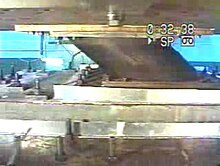 |
| LRB being tested at the UCSD Caltrans-SRMD facility |
Lead rubber bearing or LRB is a form of base isolation employing a heavy damping. It become invented by means of Bill Robinson, a New Zealander.
Heavy damping mechanism incorporated in vibration manipulate technologies and, mainly, in base isolation gadgets, is regularly considered a valuable source of suppressing vibrations hence improving a building's seismic overall performance. However, for the rather pliant systems inclusive of base remoted structures, with a enormously low bearing stiffness but with a high damping, the so-called "damping pressure" may turn out the primary pushing pressure at a sturdy earthquake. The video indicates a Lead Rubber Bearing being tested at the UCSD Caltrans-SRMD facility. The bearing is made from rubber with a lead middle. It turned into a uniaxial check in which the bearing turned into additionally under a full shape load. Many homes and bridges, each in New Zealand and elsewhere, are blanketed with lead dampers and lead and rubber bearings. Te Papa Tongarewa, the national museum of New Zealand, and the New Zealand Parliament Buildings had been equipped with the bearings. Both are in Wellington which sits on an active fault.
* Spring-with damper base isolator
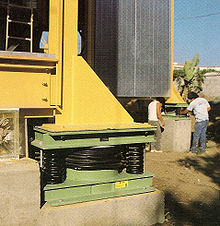 |
| Spring-with damper close-up |
Springs-with-damper base isolator established below a 3-tale city-house, Santa Monica, California is proven on the photo taken previous to the 1994 Northridge earthquake exposure. It is a base isolation device conceptually just like Lead Rubber Bearing.
One of two three-tale metropolis-houses like this, which changed into well instrumented for recording of each vertical and horizontal accelerations on its flooring and the ground, has survived a intense shaking at some stage in the Northridge earthquake and left treasured recorded data for in addition look at.
* Simple roller bearing
Simple curler bearing is a base isolation device which is meant for safety of diverse building and non-building structures in opposition to probably destructive lateral affects of strong earthquakes.
This metal bearing aid can be adapted, with certain precautions, as a seismic isolator to skyscrapers and buildings on soft ground. Recently, it has been hired below the call of metallic roller bearing for a housing complex (17 testimonies) in Tokyo, Japan.
* Friction pendulum bearing
Friction pendulum bearing (FPB) is every other call of friction pendulum system (FPS). It is primarily based on three pillars:
* Articulated friction slider ;
* spherical concave sliding surface
* enclosing cylinder for lateral dispplacement restraint.
Snapshot with the link to video clip of a shake-desk trying out of FPB machine helping a inflexible constructing model is presented at the proper.
WRITTEN BY : ADRISH WAHEED
Labels: EARTHQUAKE ENGINEERING

0 Comments:
Post a Comment
Subscribe to Post Comments [Atom]
<< Home